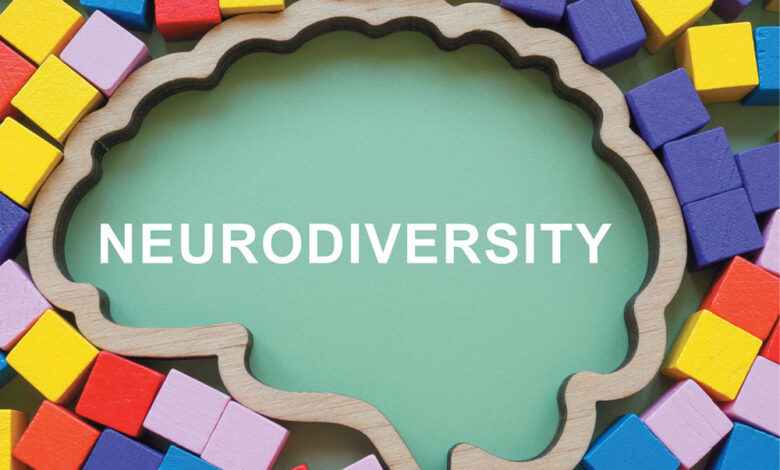
You’re Missing the Point: Misunderstood Behaviors in Neurodivergent Men and the Case for Intersectional Care
Marcus had been passed from one provider to the next. Every chart told a similar story: He was described as emotionally distant, frequently irritable and difficult to engage. He missed appointments, returned few calls and sat stiffly during groups without speaking. His affect was flat. His tone was defensive. Case managers noted that he “resisted rapport” and “lacked insight.” He had also participated in three separate programs over the past year. In each instance, his involvement deteriorated within weeks. When asked to reflect on those experiences, Marcus said people eventually grew tired of him. He described himself as “not good at emotions” and reported that others had told him he needed to “man up or check out.” What his providers did not understand was the true intent and meaning behind Marcus’ affect, behavior and difficulties, impeding his quality of care and inhibiting his progress.
WHAT CASE NOTES OFTEN MISS
Neurodivergent men are frequently misunderstood within clinical and case management settings. Many arrive with diagnostic ambiguity and behavioral labels that obscure, rather than clarify, the nature of their challenges. Clients like Marcus are often described as emotionally unavailable, oppositional or disengaged. However, these terms more often capture the provider’s discomfort, rather than the client’s internal state. What appears to be withdrawal or defiance may, in fact, reflect executive dysfunction, sensory overload or social burnout.
Some of these presentations are rooted in neurobiology, including difficulties with socialization, alexithymia (difficulty identifying emotions) or verbal processing. Other aspects are learned adaptations. Men socialized to suppress vulnerability often default to emotional detachment or defensive posturing as protective strategies. For many, masking persists until burnout occurs, or until shutdown becomes the only viable option. It would be inaccurate to suggest that such individuals are incapable of connection. In many cases, they have simply lacked consistent, safe opportunities to connect on their own terms.
WHY INTERSECTIONALITY MATTERS IN REAL-WORLD PRACTICE
We know from both research and lived experience narratives that race, gender identity, disability and socioeconomic status all shape how a person’s behavior is seen and recorded in clinical settings. A Black autistic man who avoids eye contact or uses a flat tone is more likely to be described as resistant, while a white autistic man might be labeled quirky or withdrawn. A client who needs extra time to process or complete forms could be labeled noncompliant, even if no one ever asked what kind of support would help. Someone with limited literacy might be seen as resistant when they’re actually just trying to navigate a system that wasn’t built with them in mind. People living in poverty often face assumptions about motivation or responsibility when they miss appointments, even though things like housing instability or lack of reliable transportation make participation genuinely difficult. These misreadings reflect larger systemic patterns in healthcare and case management. Take trans men, for example. They’re often left out of gender-specific programming altogether. Some are placed in spaces that don’t match their identity. Others are excluded outright or told they need to educate staff before they can receive support. Even in programs that claim to be inclusive, trans men frequently deal with misgendering, invasive questions or pressure to prove they belong. Affirming care for trans men means checking that the structure of a program is actually safe for them. It means advocating for flexibility, creating customized support paths and making sure providers are trained in both trauma-informed care and gender-affirming practices. Most importantly, it means approaching every interaction with humility, openness and a willingness to learn what you don’t yet know. All of this adds up, especially for people who already carry trauma related to healthcare and systems of authority.
This is where intersectionality becomes essential as a practical framework for understanding why some clients fall through the cracks and why standard approaches don’t work for everyone. If we don’t account for the layers of identity and history that shape a person’s experience, we risk perpetuating harm.
WHEN SYSTEMS EXPECT WHAT CLIENTS CANNOT GIVE
Programs designed around “typical” norms often create invisible barriers for neurodivergent clients. Participation is frequently predicated on verbal self-advocacy, emotional self-awareness and consistency in engagement. However, many clients (especially those with co-occurring trauma or communication differences) cannot meet these expectations without significant support.
In Marcus’s case, the systems he encountered expected skills he did not have: the ability to articulate distress in real time, the capacity to process overwhelming environments and the executive functioning to track appointments and respond promptly. His inability to perform in these ways was misinterpreted as apathy or resistance, but the systems around him were never built for someone like him. This is a familiar experience for many neurodivergent men in care, as the criteria for receiving help often rely on behaviors that are inaccessible to the very individuals who need it most.
REFRAMING SUPPORT: WHAT ACTUALLY HELPS
Eventually, Marcus was paired with a case manager who had experience working with neurodivergent adults. She did not attempt to correct or “fix” his behavior. Instead, she slowed the pace of interaction, checked in by text when verbal communication felt difficult and asked directly about his sensory needs. She offered information in writing, allowed for delayed responses and created flexible structures for engagement.
Through these adaptations, Marcus began to express needs he had never articulated in previous programs. He explained that he often froze when faced with paperwork and could not answer open-ended questions without preparation. He shared that his motivation often collapsed under the weight of anticipated failure, and that past experiences with providers had taught him to expect rejection.
Gradually, with consistent accommodations, Marcus became more engaged. He began participating in group discussions, asked questions during appointments and initiated check-ins when overwhelmed. The changes were not dramatic (and should not be expected to be), but they were meaningful and sustained.
REIMAGINING THE ROLE OF THE CASE MANAGER
A shift from behavior management to contextual care begins with reframing the questions we ask. Rather than assuming a client is unmotivated or oppositional, providers can inquire about environmental barriers, processing preferences or unspoken expectations. Documenting missed appointments without exploring accessibility concerns limits the potential for meaningful change. Labeling clients as manipulative or noncompliant often reflects systemic inflexibility more than client pathology.
Effective case management requires attunement to a client’s communication style, processing needs, and lived context. This may include:
- Offering multiple communication modalities (text, email, written summaries)
- Normalizing delayed processing and allowing extended response times
- Providing clear, repeated explanations of plans or expectations
- Creating opportunities for clients to express needs nonverbally
- Avoiding punitive responses to dysregulation or avoidance
Clinical documentation should reflect nuance, context and a commitment to curiosity. Words carry weight. When a provider labels a client as difficult, those assumptions often follow the client through future systems and shape the care they receive.
FINAL REFLECTIONS
Case managers are often the first point of sustained contact for clients navigating complex systems. This position offers a unique opportunity to shape outcomes through relational trust and structural flexibility.
Clients like Marcus do not fail programs because they lack motivation. They disengage because the conditions required for participation are misaligned with their neurological, cultural or psychological realities. Rebuilding trust requires that we, as providers, take responsibility for that mismatch and adapt accordingly. Neurodivergent men (particularly those who are also trans, Black, disabled or economically marginalized) deserve care that sees them clearly. They deserve systems designed to respond to their needs, not merely react to their behavior. Above all, they deserve providers who do not expect trust, but earn it through consistency, respect and the willingness to be taught.
The work of case management must disrupt the cycles of misunderstanding and exclusion that so many have come to expect. We do that not by demanding more of our clients, but by choosing to ask better questions, and how to honor their needs and identities with informed support.

 Emiley Morton
Emiley Morton

